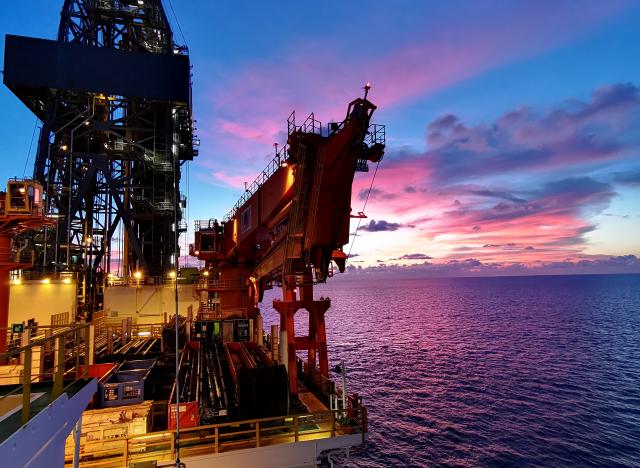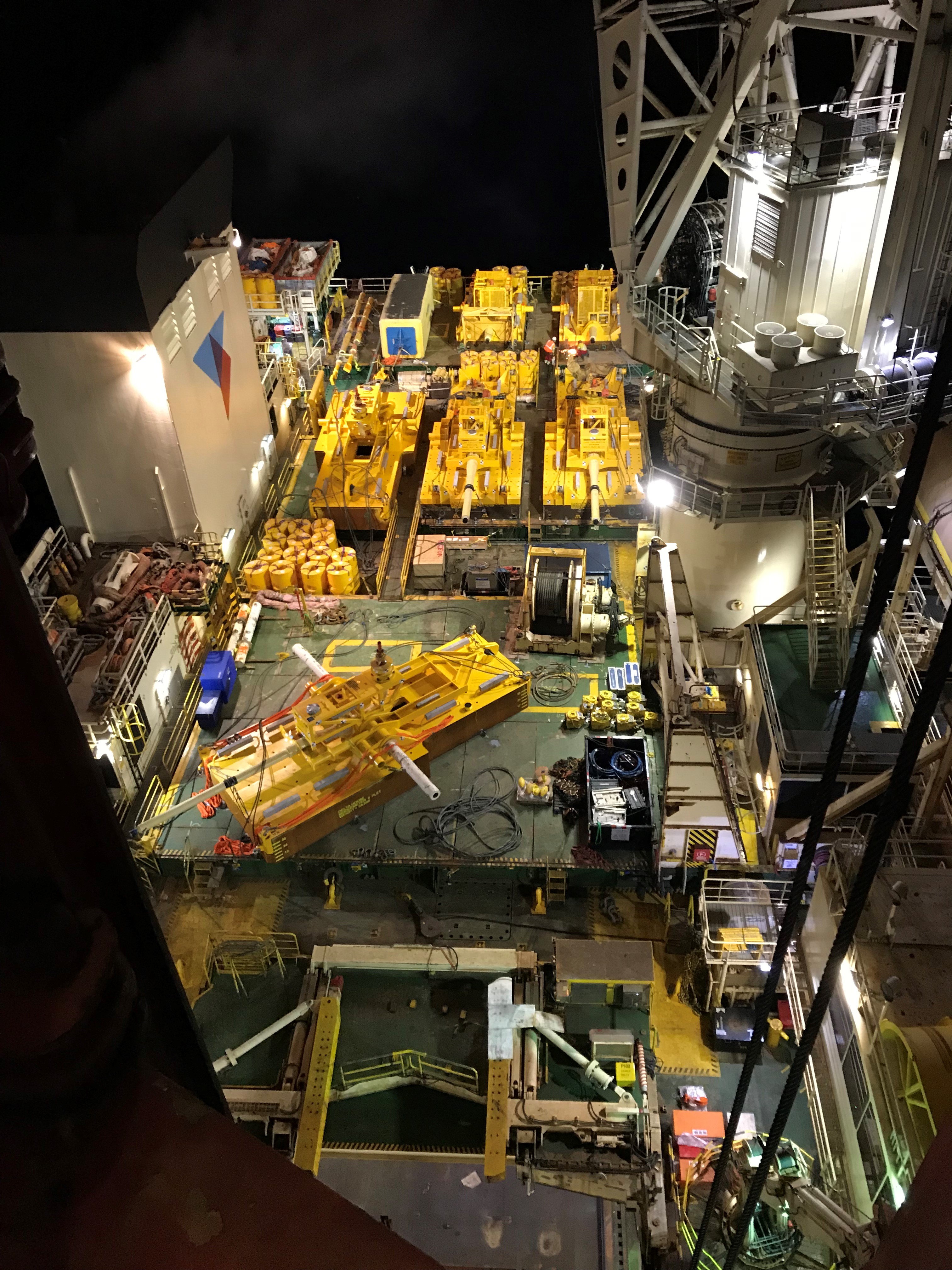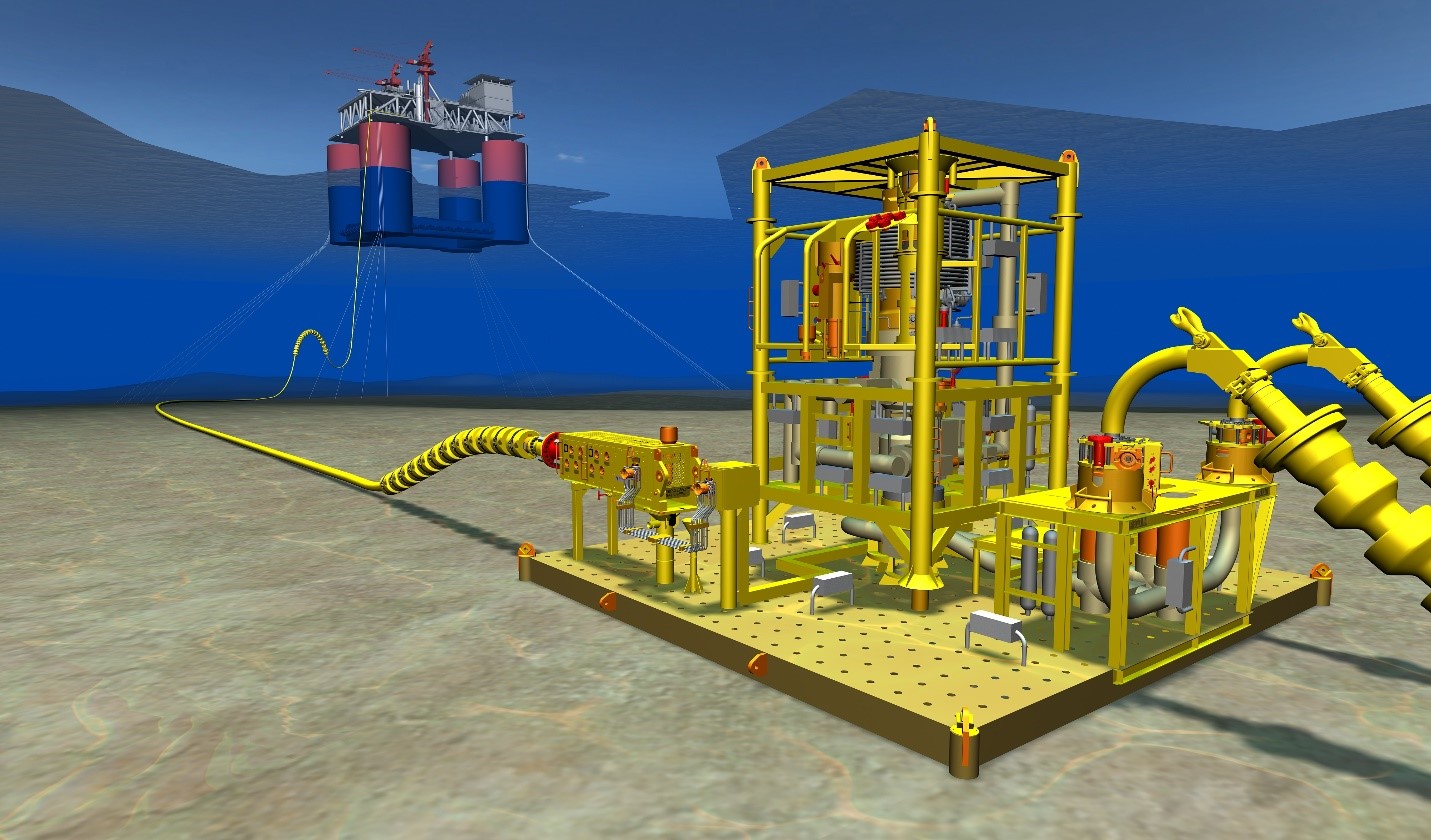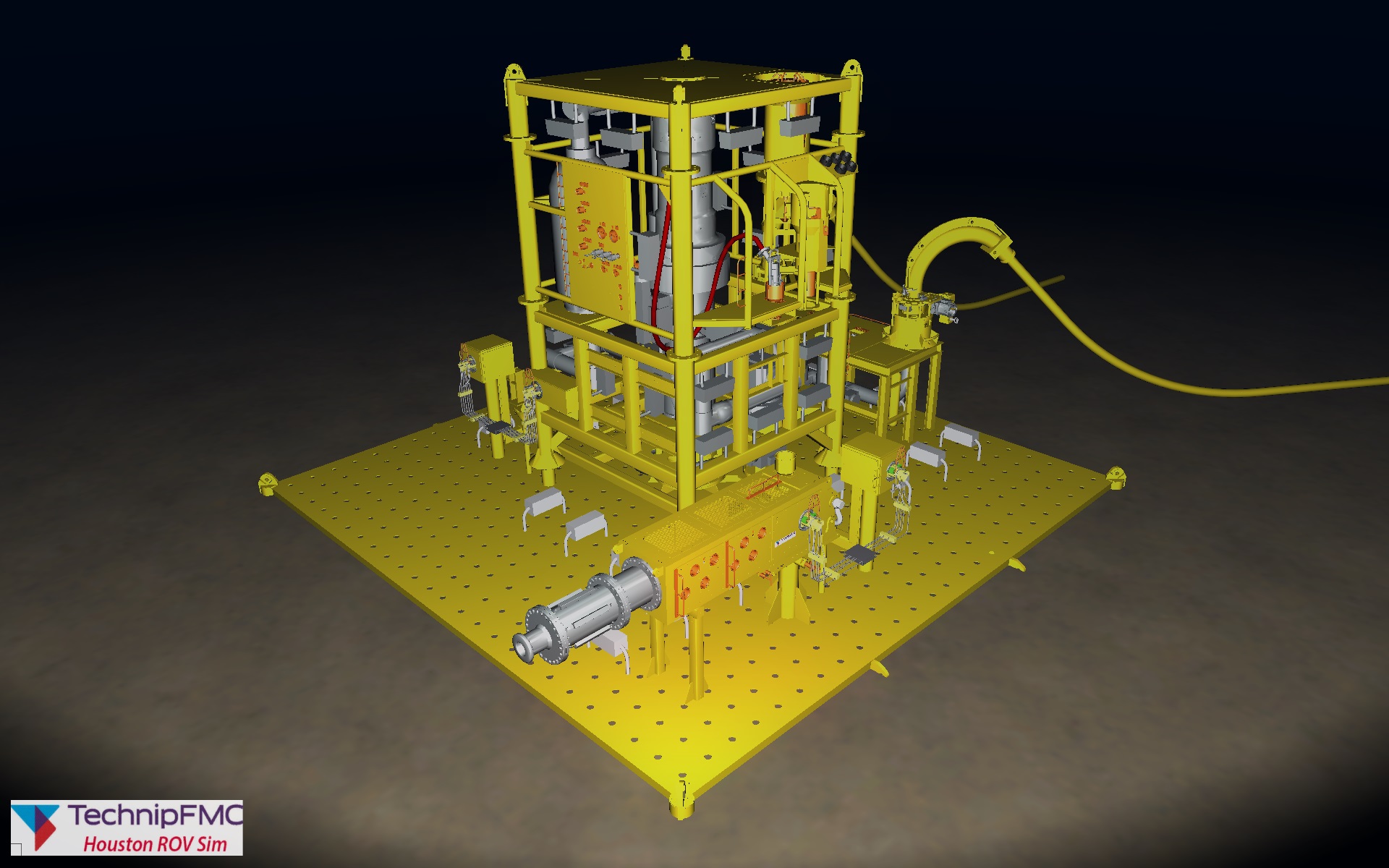
A revival is underway in the deepwater sector as it positions itself as a viable alternative to tight oil investments. (Source: AzmanMD/Shutterstock.com)
Deepwater projects prior to the market downturn of 2014 were not known for being small, fast or easy on budgets. Post 2014, the offshore industry responded with deep cuts in cost, cycle time and breakeven costs. These cuts brought changes in design and work processes, and in turn, reinvention for the deepwater sector. As the offshore industry continues to transform to meet global energy demands and challenges, the collaboration between service industries and operators are delivering technology solutions.
In exclusive interviews with E&P, subsea experts share details on how a phased development approach to field development, along with long-distance subsea tiebacks are making an impact. Additional articles in this month’s cover feature examine the nuances of deepwater pipelay vessel options and innovative solutions under development in the Atlantic Canada region.

Transformation underway
The reports of deepwater’s demise were, to paraphrase Mark Twain, an exaggeration. What is not an exaggeration is the rapid transformation the sector has undergone in the past few years. The deepwater projects of today are simpler, smaller and require less capex and opex.
A deepwater revival is underway as the slimmer and more agile deepwater sector, with its shorter investment cycles, is now offering a viable alternative to tight oil, according to a Wood Mackenzie report. “In both deep water and tight oil, costs have come down while development techniques have improved, allowing vast new reserves to break even under $50,” said Angus Rodger, director of Asia-Pacific upstream for Wood Mackenzie, in the report.
While the nature of deep water hasn’t fundamentally changed, the investment proposition has, Rodger noted. “There has been an impressive reset of deepwater economics. Pre-FID [final investment decision] projects’ breakevens have fallen 37% from an average $79/boe down to $50/boe,” he said. “Average development capex/boe has fallen from over $20/boe in 2013 to under $8/boe today.”
Compression of the investment cycle has led to companies focusing on bringing fields online faster through the use of simpler development concepts, including the increased use of subsea tiebacks, the report noted. “Simpler projects are quicker—from 2004 to 2014, the average project took 10 years from discovery to come online. From 2015, the time from discovery to first production has halved to five years. Leading the way are new low-breakeven developments in the U.S. Gulf of Mexico [GoM] and Angola,” Rodger said.
Shortened times to development can only help the deepwater sector continue to prosper. According to a McKinsey Energy Insights report, by 2035 an additional 43 MMbbl/d of new crude production from unsanctioned projects will need to be added to meet demand. Offshore is forecast by McKinsey to be responsible for providing about 30% of that 43 MMbbl/d, with half of the total offshore volume expected to come from deepwater and ultradeepwater resources under their base case scenario.
Application alternatives
The need for long-term planning and large capital allocation with delayed returns has historically fit the bill for what a subsea deepwater oil and gas field development project requires. However, phased development approaches and long-distance tiebacks provide deepwater alternatives.
At this year’s Offshore Technology Conference, Jon Marsh Duesund, a partner at Rystad Energy, presented the energy consultancy’s findings on the pros and cons of phased developments (Table 1) as compared to what he called the “big elephant in the room”—shale.
|
PROS |
CONS |
|
Lower initial capex |
Lower long-term value creation |
|
Faster startup and payback period |
Less optimal long-term development |
|
Reduced subsurface risk |
Limited flexibility and expansion options |
|
Tenders can capture changing market conditions |
Suboptimal risk-reward |
|
Lower investment risk |
Less gain of suppliers’ experiences |
TABLE 1. Rystad Energy lists the pros and cons of phased development. (Source: OTC-29483-MS paper)
He noted that while offshore costs have come down, the sector still trails shale development in the amount of time it takes for investors to recover their initial investment: offshore is down from 10 years to seven while for a shale well it is down to less than two years. The emergence of shale will yield short and more volatile market cycles, creating more uncertainty for operators looking to make long-term investment decisions, he added.
“We need to prepare for that and keep it in mind as we plan future projects,” Duesund said in his presentation before noting that almost one-third of the global capex in 2018 went into U.S. shale. “For those in the deepwater, that’s money that could have gone into offshore projects.”
In determining what he believes are the pros and cons of a phased development approach, Duesund noted an increase in the number of scaled-down facilities, with an overarching post-downturn deepwater trend toward the use of more subsea tiebacks. Before the downturn, tiebacks had an average 22% share of sanctioned projects from 2011 to 2013, and the average was 67% from 2015 to 2018, he said.
The use of tiebacks offers a way for operators to use available facilities more efficiently. “Long-distance tiebacks provide a capital-efficient way of developing a field,” said Douglas Wiles, project engineering manager for subsea projects at TechnipFMC. “Many of the existing production facilities, particularly in the GoM, are underutilized. The facilities were sized for early production. A long-distance tieback can generate additional value from a reservoir by making greater use of existing offshore processing capacity.”
The time to first oil also is accelerated as there is no need to build a new facility. “Another benefit of the phased development approach, along with schedule acceleration, is risk reduction,” said Janardhan Davalath, business development manager for subsea processing at TechnipFMC.
“If the operator has a choice between a large field development with a brand new host and putting in multiple billions of dollars in capex, then that is a lot of financial risk,” he said. “If they use the phased development approach, tying only one or two wells back to an existing host facility, then they’ve reduced the financial risk.”
Another benefit of a phased development approach is that it allows the operator to get to know the reservoir better. “There also is a significant reduction in risk of the reservoir not being delineated correctly before investing capital,” he said. “It enables a step-wise investment decision.”
It is a point seconded by Wiles. “The information on where to locate your wells is based upon reservoir modeling and/or data from a few exploratory wells,” he said. “With time and with production, much more is known. It is possible—and quite likely—that the well locations that are decided on for the initial production facility are not ideal. Therefore, long tiebacks enable future wells to be located so as to improve production and recovery.”
Integration execution
Moving hot reservoir fluids in flowlines along a cold seafloor for extended distances does create unique challenges. The phased development approach can address these challenges by enabling operators to plan and select technologies, as needed, to ensure the success of the tieback. For example, flowline heating and chemical treatment systems can prevent the formation of hydrates blocking the line and the flow due to temperature loss.
Subsea boosting pumps help ensure oil will flow distances of 48 km (30 miles) or more, providing the extra bump in pressure needed for when it is too low for the oil to flow naturally. For a brownfield project, ensuring the in-place systems can accommodate the additional load placed on by the new systems is key.
“For long-distance tiebacks, more power is often needed; there is typically a limited amount of power available for new tiebacks to brownfield facilities,” Wiles said. “On the Who Dat project, which has a relatively short tieback distance of 3 miles [5 km], LLOG installed a new, dedicated power generator.”
In March 2018, LLOG awarded TechnipFMC with an integrated engineering, procurement, construction and installation contract to provide a subsea boosting system to expand production at its Who Dat Field. The field, located in the GoM’s Mississippi Canyon Block 503 and 547 in about 945 m (3,100 ft) of water, entered production in 2011. The depletion plan for the field comprises 11 subsea wells, 11 productive horizons, 26 reservoirs and 35 planned completions, according to TechnipFMC.
The company worked on the field during its development in 2011 and 2013 for LLOG, installing seven initial subsea production trees and control systems, four subsea manifolds, multiphase meters, and electric and hydraulic subsea distribution systems. As development continued, the company ultimately provided subsea production trees and control systems for all 11 Who Dat wells. This new contract covers the development and installation of a 2-MW, 10,000-psi subsea multiphase boosting system optimized for the gas content of the field, along with a power and control umbilical, tie-in structure, topsides and subsea control system and distribution, according to the release.
The boosting pump, powered by a permanent magnet motor, operates at speeds up to 6,000 rpm to achieve the required boost pressure for the well fluids and, in turn, will help LLOG realize about a 10% increase in production rates.


(Source: TechnipFMC)
Early engagement with the operator on the project has been a key enabler, ensuring that final design decision is the optimal one. “Specifically with LLOG, we were able to provide data to support the modeling of the different development scenarios. We uploaded an electronic version of a pump into LLOG’s reservoir model and helped them understand what it is that the pump is capable of doing,” Wiles said. “By getting involved early, we were able to help LLOG to get information upfront to enable them to make an assessment based on the value of a particular solution.”
For Davalath, early engagement helps bridge the knowledge gap, especially in regard to unique technologies like subsea boosting or processing. “By helping close the gaps on long lead times and through identifying upfront engineering requirements, we can ensure the right phasing of the development to move through the decision gates efficiently,” he said.
Recommended Reading
Range Resources Holds Production Steady in 1Q 2024
2024-04-24 - NGLs are providing a boost for Range Resources as the company waits for natural gas demand to rebound.
Hess Midstream Increases Class A Distribution
2024-04-24 - Hess Midstream has increased its quarterly distribution per Class A share by approximately 45% since the first quarter of 2021.
Baker Hughes Awarded Saudi Pipeline Technology Contract
2024-04-23 - Baker Hughes will supply centrifugal compressors for Saudi Arabia’s new pipeline system, which aims to increase gas distribution across the kingdom and reduce carbon emissions
PrairieSky Adds $6.4MM in Mannville Royalty Interests, Reduces Debt
2024-04-23 - PrairieSky Royalty said the acquisition was funded with excess earnings from the CA$83 million (US$60.75 million) generated from operations.
Equitrans Midstream Announces Quarterly Dividends
2024-04-23 - Equitrans' dividends will be paid on May 15 to all applicable ETRN shareholders of record at the close of business on May 7.





